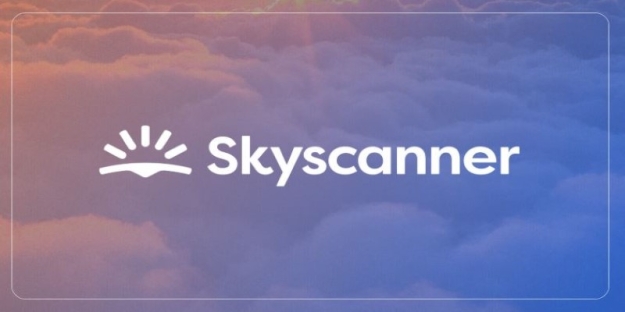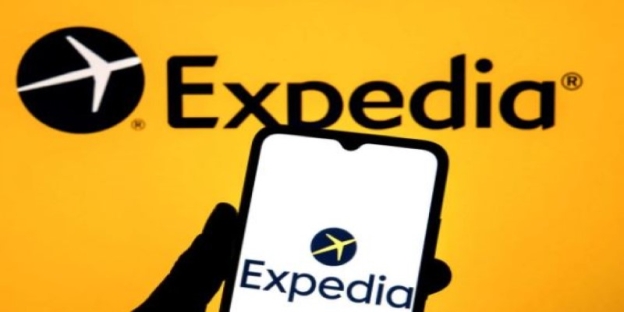Don’t Book A Flight Before You Read This Secret Guide
Searching for flights can be overwhelming. Prices change constantly, hidden fees add up, and sometimes the “cheapest” option isn’t the best deal. The truth is, most travelers end up paying more than they should. This guide breaks down proven strategies and tools that will save you money, help you choose smarter, and make sure you get the most value before booking your next flight.
Timing Your Booking Matters
Airlines adjust fares daily, and the day you search makes a big difference.
Best days to book: Studies show Tuesdays and Wednesdays often bring the lowest fares. Weekend searches tend to show higher prices.
How far in advance: For domestic flights, aim to book 1–3 months ahead. For international trips, 3–6 months usually gives the best mix of availability and price.
Use alerts: Services like Google Flights, Skyscanner, and Hopper let you set price alerts so you’re notified when fares drop.
Tip: Avoid booking too early (airlines may still price high) or too late (prices spike close to departure).
Compare Across Multiple Platforms

No single site shows every available fare. Smart travelers compare across at least two or three platforms.
- Google Flights – Great for browsing flexible dates and destinations.
- Skyscanner – Excellent for international and budget airlines.
- Kayak – Strong for comparing extras, such as baggage fees.
- Expedia & Priceline – Sometimes bundle flights and hotels for better overall savings.
Always cross-check directly with the airline’s website. Some airlines, like Southwest Airlines, don’t appear on most booking sites and may offer cheaper direct prices.
Watch Out For Hidden Fees
That “$120” flight may cost $220 after add-ons.
Baggage fees: Many budget airlines charge for both checked and carry-on bags.
Seat selection: Choosing your seat in advance can add $10–$50, depending on the route.
Change and cancellation fees: Some airlines charge heavily, while others, like Delta and Alaska Airlines, allow free changes on many routes.
Always check the final price breakdown before clicking "book." Sometimes, a slightly higher base fare with free baggage ends up cheaper.
Fly Flexible For Big Savings
Flexibility is one of the biggest money-savers.
Flexible dates: Even shifting your trip by a day can cut costs by 20–40%.
Flexible airports: Flying into nearby airports (like Oakland instead of San Francisco or Fort Lauderdale instead of Miami) often comes with lower fares.
Stopovers: Longer layovers can cut prices significantly. Some airlines, like Icelandair, let you add a free stopover in Reykjavik.
Use Google Flights’ “Flexible Dates” option to spot huge price differences instantly.
Loyalty Programs And Credit Card Rewards
Frequent flyer programs aren’t just for business travelers.
Sign up for free: Join airline loyalty programs like American AAdvantage, Delta SkyMiles, or United MileagePlus. Points add up over time and give perks like early boarding.
Credit card bonuses: Travel cards, such as the Chase Sapphire Preferred or Capital One Venture Rewards, offer sign-up bonuses worth hundreds of dollars in flights.
Companion tickets: Some cards, like the Alaska Airlines Visa, give a discounted companion fare each year.
If you fly even twice a year, rewards cards often pay for themselves.
The Secret Of “Hidden City” Ticketing
Sites like Skiplagged reveal flights where your destination is a layover city. For example, booking New York → Dallas → Phoenix might be cheaper than booking New York → Dallas directly.
Important: Airlines dislike this practice, and it only works with carry-on luggage (checked bags go to the final destination). Still, it’s a clever hack for significant savings if you’re comfortable with the risk.
Use Regional Budget Airlines
Many low-cost carriers don’t appear in big search engines. Booking directly on their sites often reveals cheap options.
- Europe: Ryanair, easyJet, Wizz Air.
- Asia: AirAsia, Scoot, IndiGo.
- U.S.: Allegiant, Sun Country.
These airlines keep costs low, but be prepared for strict baggage rules. Always measure your carry-on before heading to the airport.
Choose The Best Time To Fly
Flight times affect pricing just as much as dates.
- Early mornings and late nights are often cheaper than midday flights.
- Mid-week travel (Tuesday or Wednesday departures) costs less than Friday or Sunday flights.
- Off-peak season (e.g., Europe in late fall, the Caribbean in early September) means lower fares and smaller crowds.
If your schedule is flexible, use Skyscanner’s “Cheapest Month” feature to plan ahead.
Bundle Flights And Hotels

Sometimes booking a package deal lowers costs, especially for international trips.
- Expedia, Priceline, and Orbitz offer discounts when flights and hotels are booked together.
- All-inclusive resorts in Mexico or the Caribbean often work out cheaper when bundled with airfare.
- Cruise packages: Some cruise lines include flights at a discount when you book directly through them.
Run the math. Sometimes buying separately is cheaper, but packages can offer strong value.
Double-Check Before You Pay
Before hitting “Confirm,” run through this quick checklist:
- Did you compare across at least two booking platforms?
- Did you check baggage, seat, and change fees?
- Is the airline reliable for on-time performance? (Sites like FlightStats can help.)
- Do you need travel insurance? (Often smart for international trips.)
Tools That Give You An Edge
Here are a few must-have tools for flight hunters:
- Hopper – Predicts future price drops and alerts you when to buy.
- Going (formerly Scott’s Cheap Flights) – Finds mistake fares and major discounts.
- SeatGuru – Shows detailed seat maps so you avoid cramped spots.
- ITA Matrix – The advanced tool that many travel agents use to uncover fare combinations.
Combine at least two of these tools for the best results.
When To Splurge
Sometimes the cheapest ticket isn’t the smartest buy. Consider paying a little more when:
1. Long Layovers or Multiple Connections
Flights with several layovers or extended wait times may look cheap, but they can turn your trip into a marathon.
Paying slightly more for a direct flight or a single connection can improve comfort and reduce potential delays.
2. Poor Airline Reliability or Customer Service
Some budget airlines save money on ticket price but have a history of flight delays, cancellations, or lost baggage.
Consider airlines with consistent on-time performance and responsive customer service—even if the ticket costs $30–$50 more.
3. Traveling With Family or Groups
If you need to sit together, the cheapest fare may not guarantee adjacent seats.
A slightly higher-priced ticket on a full-service airline often allows you to select seats in advance, ensuring your family or friends can sit together.
4. Travel Insurance and Flexibility
Budget tickets often come with strict cancellation policies or change fees, sometimes hundreds of dollars.
Investing in a more flexible ticket or refundable fare may cost more upfront but offers peace of mind in case plans change.
This is crucial for trips with unpredictable schedules, business travel, or international flights where rebooking can be complicated.
5. Overall Comfort and Convenience
Early boarding, better legroom, and additional baggage allowance may add a small premium but significantly improve your travel experience.
If a short flight costs $50 more for extra amenities or priority boarding, the comfort and reduced stress can outweigh the savings.
Multi-City and Round-the-World Ticket Strategies
If you plan to visit multiple cities or countries in one trip, multi-city tickets or round-the-world (RTW) tickets can often be cheaper than booking separate flights.
1. Choosing the Right Booking Method
Multi-city search: Most flight booking platforms (Google Flights, Kayak, Expedia) have a “multi-city” option that allows you to book multiple legs in a single order.
Alliance tickets: Using airline alliances (Star Alliance, Oneworld, SkyTeam) for multi-city trips can be cheaper, covering different airlines under one booking.
RTW tickets: Ideal for global trips, these tickets are priced based on mileage or the number of segments, offering high flexibility.
2. Maximize Mileage Redemption
Accumulate and redeem miles: Multi-city trips are perfect for redeeming miles, as a single redemption can cover multiple segments, usually giving better value than booking one-way awards.
Flexible segment combinations: Many airline alliance mileage programs let you combine segments efficiently, giving more value for international or business-class flights.
Mind layover rules: Some award tickets have limits on stopover durations; planning city sequences carefully can avoid extra fees.
3. Money-Saving Tips
Travel off-peak: Choosing less popular cities or secondary airports often lowers prices.
Compare segmented vs. single booking: Sometimes multi-city tickets are cheaper than separate tickets, but for certain routes or low-cost carriers, buying individually may be cheaper—always compare.
Open-jaw options: Flying from A → B, then returning from C → A while connecting B → C via train or short flight can reduce total cost.
4. Recommended Tools and Resources
Google Flights Multi-City Search: Visualize different routes and compare costs easily.
ITA Matrix: Advanced fare combinations for multi-city planning.
Airline alliance websites: Check Star Alliance, Oneworld, or SkyTeam RTW options.
Award booking tools: Programs like ExpertFlyer or AwardHacker help find mileage-efficient multi-city itineraries.
5. Extra Tips
Book early for RTW or multi-city trips—availability is limited.
Keep your itinerary flexible; slight date changes can save hundreds.
Track prices and alerts via Google Flights or Hopper for each segment.
Conclusion: Book Smarter, Not Harder
Flight deals are out there — but you need to look beyond the first search result. Compare across platforms, factor in fees, and use tools that give you real insights. Consider loyalty programs and credit card rewards if you fly regularly. And above all, don’t rush. Taking just a few extra minutes to double-check can save hundreds of dollars.
Your next step? Set up free alerts on Google Flights or Hopper, then compare deals on Skyscanner and the airline’s own site. With these strategies, you’ll know you’re getting the best possible fare before you book.
Was this helpful? Share your thoughts
- Learned practical methods
- Solved my questions
- Inspired new ideas
-
![How To Plan Your Perfect 10-Day Europe Trip Itinerary]() How To Plan Your Perfect 10-Day Europe Trip Itinerary
How To Plan Your Perfect 10-Day Europe Trip Itinerary -
A 10-day Europe trip is long enough to explore several countries without feeling rushed, but short enough that you’ll need to prioritize. The key is balancing big-name cities with smaller, easy-to-reach destinations, while keeping travel time efficient and costs manageable. Below is a practical guide with sample itineraries, travel tips, and booking advice to help you build the trip that fits your budget and style.
Explore More
-
![Hiking Mount Fuji In 2025: Guided Vs Unguided Trips]() Hiking Mount Fuji In 2025: Guided Vs Unguided Trips
Hiking Mount Fuji In 2025: Guided Vs Unguided Trips -
Mount Fuji stands as a beacon of natural wonder, drawing adventurers from around the globe to its snow-capped peak. This majestic volcano, with its symmetrical cone, has inspired artists and hikers for centuries. As 2025 approaches, new regulations aim to preserve its beauty while ensuring safer ascents. This guide breaks down the choices between guided and unguided hikes, equipping readers with all the details needed to plan a memorable journey up Japan's iconic summit.
Explore More





